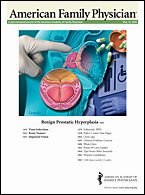
Health informatics is information engineering applied to the field of health care, essentially the management and use of patient healthcare information. It is a multidisciplinary field that uses health information technology (HIT) to improve health care via any combination of higher quality, higher efficiency, and new opportunities. The disciplines involved include information science, computer science, social science, behavioral science, management science, and others. The NLM defines health informatics as "the interdisciplinary study of the design, development, adoption and application of IT-based innovations in healthcare services delivery, management and planning". It deals with the resources, devices, and methods required to optimize the acquisition, storage, retrieval, and use of information in health and bio-medicine. Health informatics tools include computers, clinical guidelines, formal medical terminologies, and information and communication systems, among others. It is applied to the areas of nursing, clinical medicine, dentistry, pharmacy, public health, occupational therapy, physical therapy, biomedical research, and alternative medicine, all of which are designed to improve the overall of effectiveness of patient care delivery by ensuring that the data generated is of a high quality.
Scientific literature comprises scholarly publications that report original empirical and theoretical work in the natural and social sciences, and within an academic field, often abbreviated as the literature. Academic publishing is the process of contributing the results of one's research into the literature, which often requires a peer-review process. Original scientific research published for the first time in scientific journals is called the primary literature. Patents and technical reports, for minor research results and engineering and design work, can also be considered primary literature. Secondary sources include review articles and books. Tertiary sources might include encyclopedias and similar works intended for broad public consumption.

PubMed is a free search engine accessing primarily the MEDLINE database of references and abstracts on life sciences and biomedical topics. The United States National Library of Medicine (NLM) at the National Institutes of Health maintains the database as part of the Entrez system of information retrieval.

American Family Physician is a biweekly peer-reviewed medical journal published by the American Academy of Family Physicians. It provides continuing medical education for family physicians and other primary care clinicians. The journal publishes original articles presenting a family medicine perspective on and approach to common clinical conditions and evidence-based, clinical reviews intended to assist family physicians in patient care.
A clinical decision support system (CDSS) is a health information technology system that is designed to provide physicians and other health professionals with clinical decision support (CDS), that is, assistance with clinical decision-making tasks. A working definition has been proposed by Robert Hayward of the Centre for Health Evidence: "Clinical decision support systems link health observations with health knowledge to influence health choices by clinicians for improved health care". CDSSs constitute a major topic in artificial intelligence in medicine.
Grey literature are materials and research produced by organizations outside of the traditional commercial or academic publishing and distribution channels. Common grey literature publication types include reports, working papers, government documents, white papers and evaluations. Organizations that produce grey literature include government departments and agencies, civil society or non-governmental organisations, academic centres and departments, and private companies and consultants.
eMedicine is an online clinical medical knowledge base founded in 1996 by Scott Plantz MD FAAEM, Jonathan Adler MD MS FACEP FAAEM, a computer engineer Jeffrey Berezin MS. The fundamental concept was to create a large repository of professional level medical content that could be both updated and accessed continuously to assist in clinical care and physician education. The eMedicine website consists of approximately 6,800 medical topic review articles, each of which is associated with one of 62 clinical subspecialty "textbooks". Pediatrics, for example, has 1,050 articles organized into 14 subspecialty "textbooks" ; the emergency medicine volume has 630 articles and internal medicine is near 1,400. If the remainder of the specialty textbooks are added to the total 6800+ articles were created in eMedicine. In addition, the knowledge base includes over 25,000 clinically multimedia files. To create this online content over 11,000 board certified healthcare specialists were recruited and managed in a first generation, proprietary learning management system (LMS). To provide some perspective on the amount of content that was created it is estimated that, if hard-copy printed out, it would total over 1 million pages.
Public health informatics has been defined as the systematic application of information and computer science and technology to public health practice, research, and learning. It is one of the subdomains of health informatics.
The Postgraduate Medical Journal is a monthly peer-reviewed medical journal that was established in 1925 by the Fellowship of Postgraduate Medicine, of which it is the official journal. It is currently published on behalf of the Fellowship by BMJ.
Trip is a free clinical search engine. Its primary function is to help clinicians identify the best available evidence with which to answer clinical questions. Its roots are firmly in the world of evidence-based medicine.
Progress Notes are the part of a medical record where healthcare professionals record details to document a patient's clinical status or achievements during the course of a hospitalization or over the course of outpatient care. Reassessment data may be recorded in the Progress Notes, Master Treatment Plan (MTP) and/or MTP review. Progress notes are written in a variety of formats and detail, depending on the clinical situation at hand and the information the clinician wishes to record. One example is the SOAP note, where the note is organized into Subjective, Objective, Assessment, and Plan sections. Another example is the DART system, organized into Description, Assessment, Response, and Treatment. Documentation of care and treatment is an extremely important part of the treatment process. Progress notes are written by both physicians and nurses to document patient care on a regular interval during a patient's hospitalization.
Evidence-based nursing (EBN) is an approach to making quality decisions and providing nursing care based upon personal clinical expertise in combination with the most current, relevant research available on the topic. This approach is using evidence-based practice (EBP) as a foundation. EBN implements the most up to date methods of providing care, which have been proven through appraisal of high quality studies and statistically significant research findings. The goal of EBN is to improve the health and safety of patients while also providing care in a cost-effective manner to improve the outcomes for both the patient and the healthcare system. EBN is a process founded on the collection, interpretation, appraisal, and integration of valid, clinically significant, and applicable research. The evidence used to change practice or make a clinical decision can be separated into seven levels of evidence that differ in type of study and level of quality. To properly implement EBN, the knowledge of the nurse, the patient's preferences, and multiple studies of evidence must all be collaborated and utilized in order to produce an appropriate solution to the task at hand. These skills are taught in modern nursing education and also as a part of professional training.
Evidence-based dentistry (EBD) uses current scientific evidence to guide decision-making in dentistry. It is an approach to oral health that requires the application and examination of relevant scientific data related to the patient's oral and medical health. Along with the dentist's professional skill and expertise, EBD allows dentists to stay up to date on the latest procedures and patients to receive improved treatment. A new paradigm for medical education designed to incorporate current research into education and practice was developed to help practitioners provide the best care for their patients. It was first introduced by Gordon Guyatt and the Evidence-Based Medicine Working Group at McMaster University in Ontario, Canada in the 1990s.

The International Journal of Paediatric Dentistry is a bimonthly peer-reviewed medical journal covering research in Paediatric dentistry. It was established in 1991 and is published by John Wiley & Sons on behalf of the International Association of Paediatric Dentistry and British Society of Paediatric Dentistry. It was formed from the merger of the journals of these two societies.
A rapid response system (RRS) is a tool implemented in hospitals designed to identify and respond to patients with early signs of clinical deterioration on non-intensive care units with the goal of preventing respiratory or cardiac arrest. A RRS consists of two clinical components and two organizational components.
Data publishing is the act of releasing research data in published form for (re)use by others. It is a practice consisting in preparing certain data or data set(s) for public use thus to make them available to everyone to use as they wish. This practice is an integral part of the open science movement. There is a large and multidisciplinary consensus on the benefits resulting from this practice.






